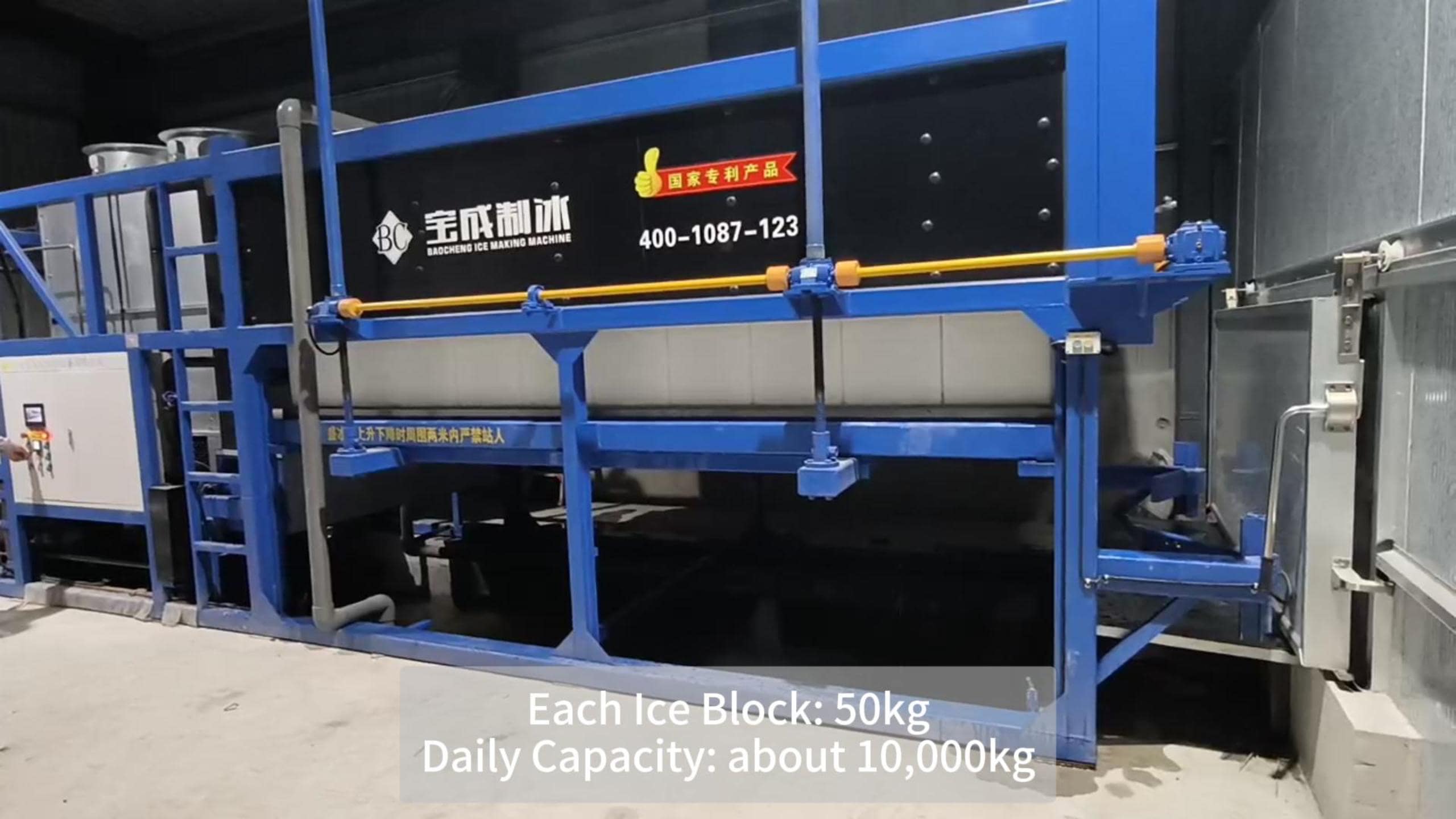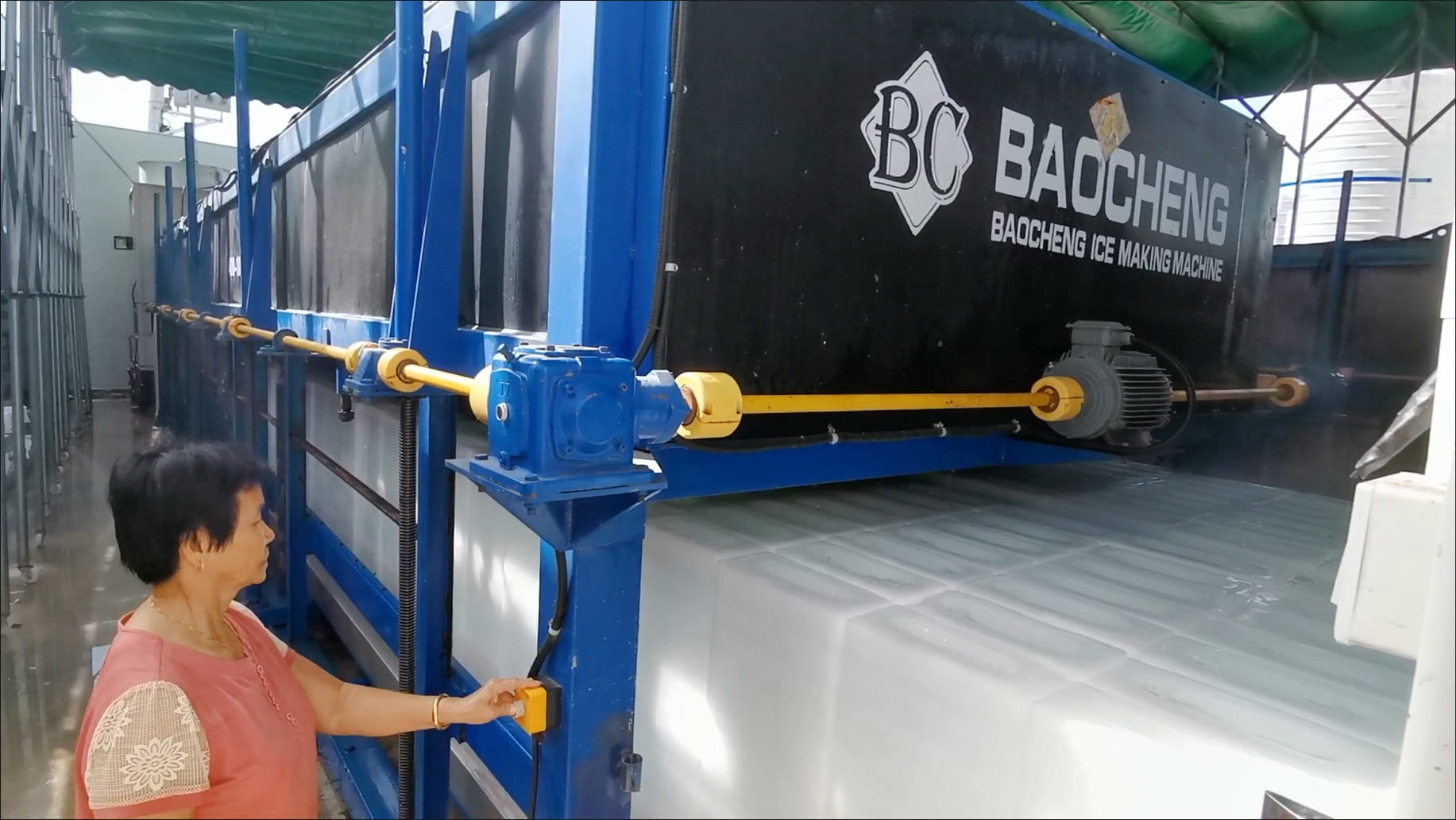Comprehensive Guide to Industrial and Commercial Ice Machines
Sep 24, 2024
This article provides a detailed overview of ice machines, including types, components, differences, advantages, production capacity, applications, and maintenance. It also explores the upstream, midstream, and downstream equipment involved in ice production, such as water treatment systems, refrigeration systems, ice molds, conveyors, storage systems, and more.
Ice machines are essential in various industries and businesses, providing a reliable supply of ice for a wide range of applications. From large-scale industrial operations to everyday commercial use, choosing the right ice machine is critical to meeting production needs efficiently. This article will explore the differences between industrial ice machines and commercial ice machines, discuss the different types of ice machines, and offer insights into their applications, energy efficiency, and maintenance requirements. We will also introduce the mechanical systems related to ice machines, from water treatment to ice storage.
Industrial vs. Commercial Ice Machines
Ice machines can be categorized into two primary types: industrial-grade and commercial-grade.
Industrial Ice Machines: These machines are designed for high-capacity ice production and are typically used in industries such as seafood processing, fruit and vegetable production, livestock farms, logistics and transportation, and large-scale cooling for construction projects. Industrial ice machines require significant power, water supply, and space due to their size and capacity.
Commercial Ice Machines: These machines are smaller, with lower production capacities, and are used in settings such as supermarkets, restaurants, bars, and hospitality venues. Commercial ice machines are less demanding in terms of power, water, and space, making them suitable for businesses with moderate ice needs.
The type of ice machine chosen depends largely on the specific requirements of the user, including production capacity and the environment in which the machine will be used.
Types of Ice Machines
Ice machines come in various forms, each producing ice in different shapes and sizes, suitable for specific applications. The most common types of ice machines include:
Block Ice Machine: Produces large blocks of ice that can be cut into smaller pieces as needed. These machines are often used in industries such as seafood processing, where block ice is ideal for keeping large quantities of fish fresh during storage and transportation.
Tube Ice Machine: Creates hollow cylindrical ice tubes. Tube ice is commonly used in beverages and food processing. Its slow melting rate makes it ideal for maintaining the temperature of drinks over an extended period.
Cube Ice Machine: Produces uniform ice cubes, perfect for commercial settings such as restaurants, cafes, and bars. Cube ice melts slowly, making it the preferred choice for cooling drinks without diluting them too quickly.
Flake Ice Machine: Produces small, soft flakes of ice that are easy to mold. Flake ice is widely used in fish and meat preservation, as well as in medical applications, where it is gentle on products and offers a high surface area for rapid cooling.
Nugget Ice Machine: Also known as snow ice machines, these machines create chewable, soft nuggets of ice. Nugget ice is popular in the healthcare and foodservice industries, particularly in hospitals and fast-food chains.
Each type of ice has a specific use case, and understanding the differences between them helps businesses choose the most suitable commercial ice machine or industrial ice machine for their needs.
Block Ice
Tube Ice
Cube Ice
Flake Ice
Nugget Ice
Site, Power, and Water Requirements
Industrial Ice Machines: These machines have high requirements for space, electricity, and water supply. They need to be installed in areas with access to ample power sources and stable water supply to ensure efficient operation. Industrial settings like seafood processing plants, logistics hubs, or large agricultural facilities must meet these conditions for optimal machine performance.
Commercial Ice Machines: In contrast, commercial ice machines are much smaller and require fewer resources. They are typically installed in backrooms or kitchens of restaurants and supermarkets, where they can easily be connected to existing water and power lines.
When selecting an ice machine, the production capacity of the machine is a key factor. Industrial machines produce large amounts of ice, typically ranging from several tons to hundreds of tons per day, whereas commercial machines have a lower production output, suitable for businesses with moderate ice needs.
Environmental Standards and Maintenance
Maintaining ice machines and ensuring they meet environmental standards is crucial for long-term operation and compliance with regulations.
Energy Efficiency: Modern industrial and commercial ice machines are designed to meet stringent energy efficiency standards, reducing power consumption and operational costs. Using energy-efficient compressors and optimizing the refrigeration cycle can significantly decrease energy use, particularly in large-scale ice production facilities.
Water Conservation: Ice machines that use water-saving technologies are also gaining traction in both industrial and commercial sectors. Systems that minimize water wastage while maintaining high ice production rates are essential for reducing environmental impact.
Maintenance and Care: Regular maintenance of ice machines ensures optimal performance and extends the machine’s lifespan. Key tasks include cleaning the machine to prevent ice contamination, inspecting the refrigeration system for leaks, and monitoring the water filtration system. Maintenance protocols also include checking the condition of ice molds, ice blades, conveyors, and control panels to prevent malfunctions.
Ice Machine-Related Equipment
Ice machines operate within a broader ecosystem of mechanical equipment, essential for the full ice production process. These systems are divided into upstream, midstream, and downstream components:
Upstream:
Water Treatment System: Ensures the water used for ice production is clean and free from contaminants, a critical factor for industries like food processing.
Refrigeration System: Maintains the necessary cooling for ice production.
Raw Material Supply System: Ensures a steady flow of water and refrigerants into the machine.
Midstream:
Ice Molds: Determine the shape of the ice produced, varying based on the machine type.
Ice Blades: Used in flake and nugget ice machines to create the required texture.
Ice Conveyor Belts: Transport ice from the production area to the storage area.
Downstream:
Ice Lifting Machines: Move ice to elevated storage or processing areas.
Ice Storage Bins: Keep ice at the desired temperature before use.
Automatic Packaging Machines: Package ice for distribution or sale.
Conveyor Systems: Automate the transfer of ice between production stages.
Ice Crushers: Break large blocks or tubes of ice into smaller, manageable pieces.
Meltwater Recycling Systems: Recycle water from melting ice, improving efficiency and reducing waste.
Ice Cold Storage
Ice Conveyor Belts
Ice Crusher
Conclusion
Choosing the right industrial ice machine or commercial ice machine is crucial for meeting production demands efficiently. With various types of machines available, including block ice machines, tube ice machines, cube ice machines, flake ice machines, and nugget ice machines, businesses can select the ideal machine based on their specific needs. Regular maintenance and attention to environmental standards ensure the longevity and efficiency of these machines.
For businesses seeking a complete ice production solution, including equipment for water treatment, ice storage, and packaging, we offer a full range of customizable solutions. Contact us today to learn more about how we can support your ice production needs with top-quality equipment and expert advice.
Read More



